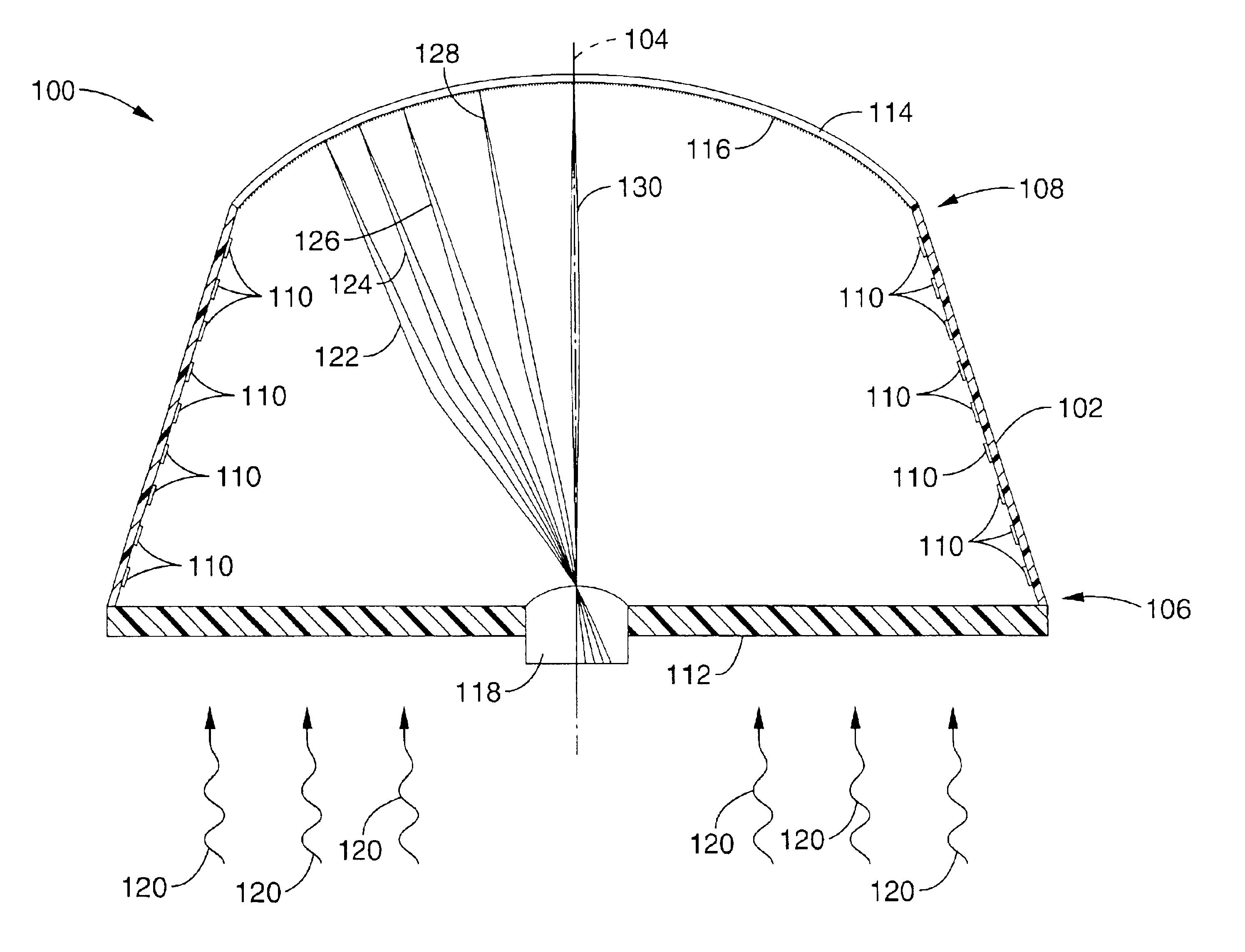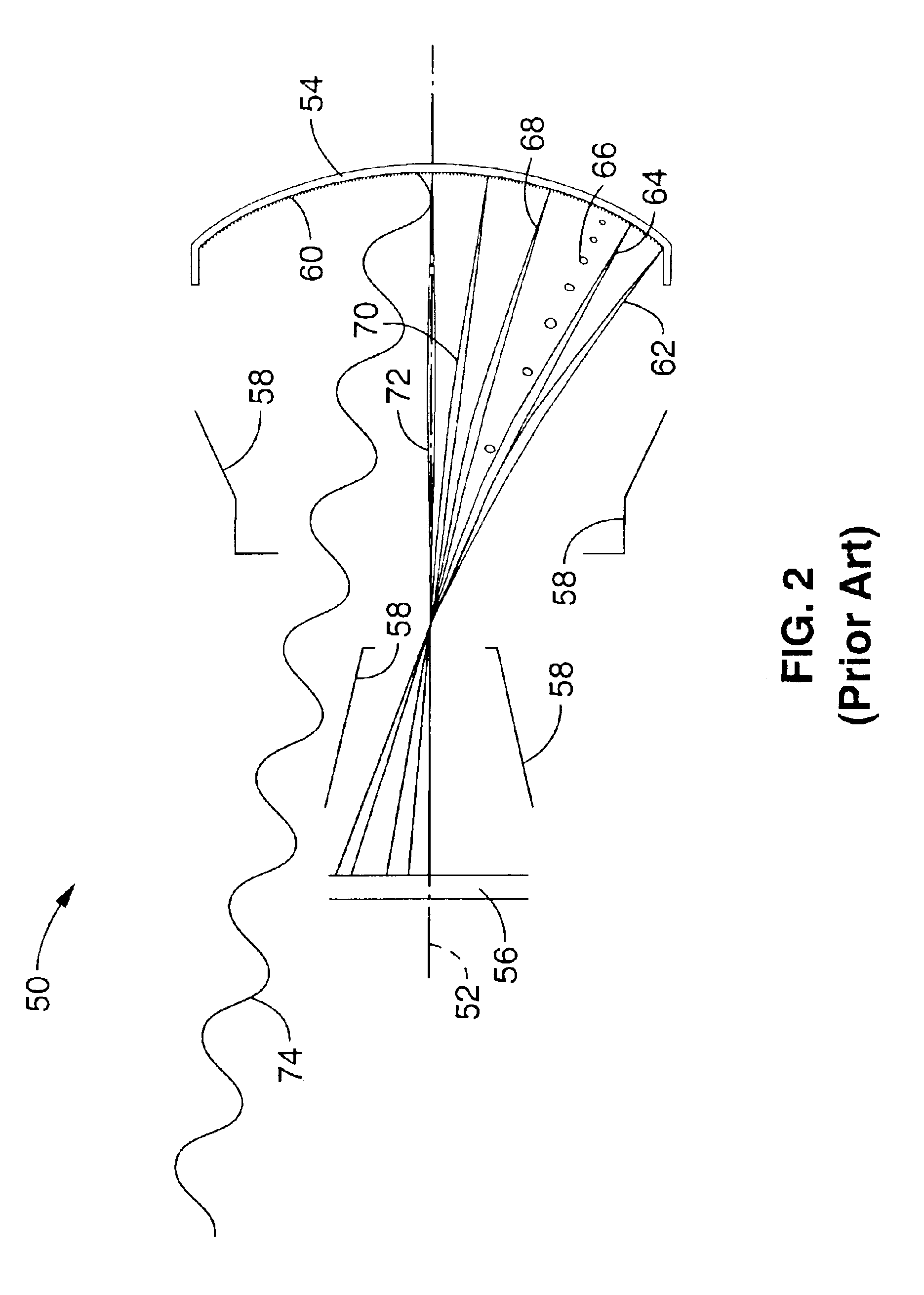Highly sensitive imaging camera for space applications including detection of ultrahigh energy cosmic rays
a high-sensitivity, cosmic ray technology, applied in the field of imaging cameras for detecting ultra-high-energy cosmic rays in space, can solve the problems of large dead area around sensitive pixels, non-uniform response, low quantum efficiency, etc., and achieves low weight and cost, negligible dead area, and simple construction
- Summary
- Abstract
- Description
- Claims
- Application Information
AI Technical Summary
Benefits of technology
Problems solved by technology
Method used
Image
Examples
Embodiment Construction
[0036]Referring more specifically to the drawings, for illustrative purposes the present invention is embodied in the apparatus generally shown in FIG. 3 through FIG. 5. It will be appreciated that the apparatus may vary as to configuration and as to details of the parts, and that the method may vary as to the specific steps and sequence, without departing from the basic concepts as disclosed herein.
[0037]Referring first to FIG. 3, an embodiment of an imaging camera according to the present invention is shown and is generally designated 100. As will be seen, the present invention comprises an imaging electron lens that works with a reflection-mode photocathode. Its purpose is to focus photoelectrons emerging from a photocathode surface to a multi-pixel electron sensor.
[0038]In the embodiment shown, the imaging camera 100 includes a generally frusto-conical housing 102 that defines a central axis 104. The housing 102 further defines a proximal end 106 and a distal end 108. In a prefe...
PUM
 Login to View More
Login to View More Abstract
Description
Claims
Application Information
 Login to View More
Login to View More - R&D
- Intellectual Property
- Life Sciences
- Materials
- Tech Scout
- Unparalleled Data Quality
- Higher Quality Content
- 60% Fewer Hallucinations
Browse by: Latest US Patents, China's latest patents, Technical Efficacy Thesaurus, Application Domain, Technology Topic, Popular Technical Reports.
© 2025 PatSnap. All rights reserved.Legal|Privacy policy|Modern Slavery Act Transparency Statement|Sitemap|About US| Contact US: help@patsnap.com



